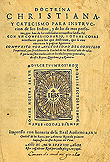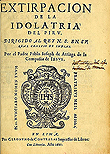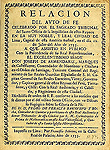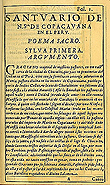The Church
A profoundly Catholic society.
Religions other than Catholicism - whether indigenous faiths, Judaism, Islam or Protestantism - were harshly punished. Bringing Christianity to the conquered Indians was the main ideological justification for the Spanish conquest; among the first books published in Peru were Indian-language catechisms for the use of evangelizing priests, and Catholicism soon became only religion openly practiced by the Indian majority as well as its conquerors. But heterodox beliefs and practices survived, both within and on the margins of the official religion. Devotion to the huacas, divinities present in the landscape, survived priestly campaigns of “extirpation”: Indians sometimes buried their dead beneath the floor of the church, with Christian prayers, then exhumed the bodies in secret for pre-Christian rites, without seeing a contradiction between them. And some of Peru’s conversos - descendents of Jews converted to Christianity under threat of expulsion from Spain and Portugal - who practiced Judaism in secret (or more often, were falsely accused of doing so) suffered persecution by the Inquisition. But coercion was just one part of the history of Peruvian Christianity. Peru was a deeply devout land where people of all races and classes bequeathed wealth to the Church, carried saints’ images in processions on Christian holidays, and built some of the most beautiful and opulent cathedrals in the world.





